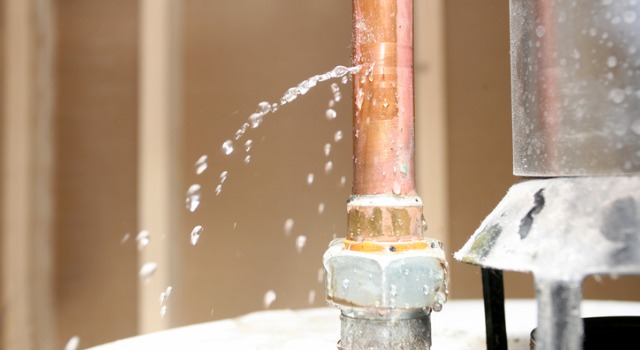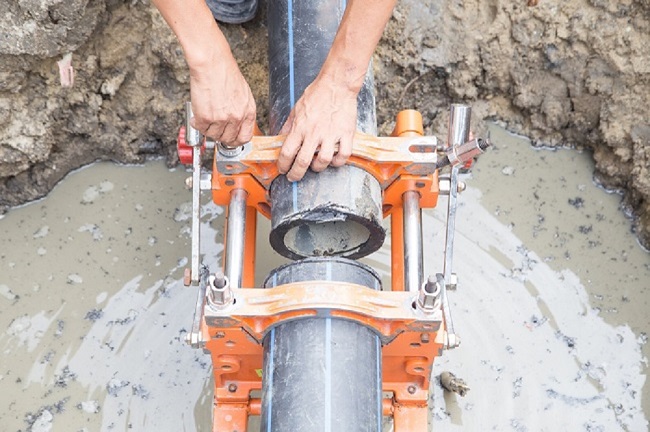From Detection to Correction: A Fast Approach to Handling Burst Pipes
From Detection to Correction: A Fast Approach to Handling Burst Pipes
Blog Article
In this article down the page you can get additional dependable resources related to How to Prepare for Your Dishwasher Installation.

A burst pipeline is a major emergency; you can only stand as you enjoy water you pay very much to reunite with the planet. In worse cases, you observe a pool on your kitchen area flooring, which is an excellent trip threat, particularly if you have kids around. If the pipe that ruptured was in your walls, bad news: you might need to paint that entire area.
Exactly how can a calamity like a ruptured pipe be avoided and handled? Well, by listening to your expert emergency plumbers and also following these regulations.
How do I know when my pipes have ruptured?
Rising and fall water pressures
Pipes do not just burst in a day. You may have seen that your kitchen tap or shower doesn't run right away when you transform the tap. It may stop briefly for a couple of secs and then blast you with even more pressure than typical.
In other instances, the water might appear typical in the beginning, after that drop in stress after a couple of seconds.
Wet wall surfaces and water spots
Prior to a pipe ruptureds, it will certainly leakage, many times. If this consistent dripping goes undetected, the leak may finish right into a vast gash in your pipe. One simple method to prevent this emergency is to keep an eye out for damp wall surfaces advertisement water discolorations. These water discolorations will certainly lead you right to the leakage.
Puddles under pipes and sinks
When a pipe bursts, the outflow creates a puddle. It may appear that the puddle is growing in size, and no matter how many times you mop the pool, in a couple of mins, there's an additional one waiting to be cleansed. Often, you might not have the ability to map the pool to any visible pipes. This is a sign to call a professional plumber.
Untraceable trickling sounds
Pipe bursts can occur in the most unpleasant places, like within concrete, inside walls, or under sinks. When your home goes quiet, you might have the ability to listen to an irritatingly consistent leaking noise. Even after you have actually examined your shower head and also cooking area faucet, the leaking may continue.
Beloved visitor, the leaking might be originating from a pipeline inside your walls. There isn't much you can do concerning that, other than inform a specialist plumber.
Shut down the Water
When water ices up, it expands in volume by concerning 9 percent. And also it broadens with incredible pressure: The stress inside pipes may go from 40 pounds per square inch to 40,000 psi! No pipe can hold that much stress, so it bursts. The break might happen where the ice forms, but more often, it takes place where water stress discovers a weak spot in the pipeline. That may be inches or even feet from the frozen location. Locate the water shutoff valve and also turn off the water to stop more damage. You may additionally need to shut off the power also, relying on where the leakages happens and just how huge it is.
Contaminated water
Many individuals presume a ruptured pipeline is a one-way electrical outlet. Quite the contrary. As water spurts of the hole or laceration in your plumbing system, contaminants discover their way in.
Your water might be contaminated from the resource, so if you can, inspect if your water tank has any kind of problems. Nonetheless, if your drinking water is provided and detoxified by the local government, you need to call your plumber instantly if you see or scent anything funny in your water.
What do I do when I detect a burst pipeline?
Your water meter will remain to run even while your water wastes. To lessen your losses, locate the major controls and transform the supply off. The water pipe are an above-ground structure at the edge of your property.
How to Fix & Detect a Leaking Pipe
How Do I Know if a Pipe is Leaking?
Leak detection tests can help you determine if your pipe has a leak. Even if you don’t see an apparent leak, you should still conduct leak detection tests regularly to save water and money—and prevent major damage to your home.
Water meter. It can be helpful to figure out what your usual water meter usage numbers are and then monitor them regularly. To monitor your meter, first, turn off all water faucets in your home. Check the meter and write down the numbers. In a few hours, check the meter again. If the numbers have changed, you have a leak. Water gauge. Use a water gauge to test your water pressure. Your showerhead should produce a certain amount of water pressure based on its model and design. If the pressure is lower than it is supposed to be for that specific showerhead, your home likely has a leak. Puddles. Look inside your bathroom, laundry, and kitchen sink cabinets. Puddles around the cabinets or around toilets, tubs, showers, and washing machines indicate the presence of a leaking pipe. You may also notice loose tiles, peeling or flaking paint, or mold caused by water accumulation. Napkin test. Even if you don’t see any puddles, you may still have a leak. You can test for water leaks in the bathroom, laundry, and kitchen by wiping below-sink connections with a napkin, paper towel, or piece of toilet paper. If it becomes damp, you probably have a leaking pipe under the sink. Discolored walls. Walls that are discolored—usually with brown or yellow stains—or bulging might mean that they have been impacted by water damage caused by a leaking pipe. Smell. A leaky pipe will create sitting water, and over time, that water may develop a musty smell. If your home smells musty, but you can’t locate the source, it may be due to a leak. Steps for Fixing a Leaking Pipe
A leaky drain can be remedied by tightening the pipe base, replacing the drain seal, caulking the rim, and tightening the pipe nut. Similarly, a leaking toilet pipe can be treated by tightening the packing nut. You may also need to replace the valve. A leaky faucet may just need tightening or replacement of the washers. If that doesn’t work, consider replacing your faucet. If your pipe has a hole in it, you may want to use a pipe leak sealer or pipe leak tape. This quick fix for water pipe leaks can also temporarily fix a copper pipe leak. https://www.ahs.com/home-matters/quick-tips/how-to-tell-if-pipes-are-leaking/

We are very interested in How to Install and Connect a New Dishwasher and I am hoping you enjoyed reading my post. Sharing is nice. Helping people is fun. I praise you for your time. Come back soon.
This Page
Report this page